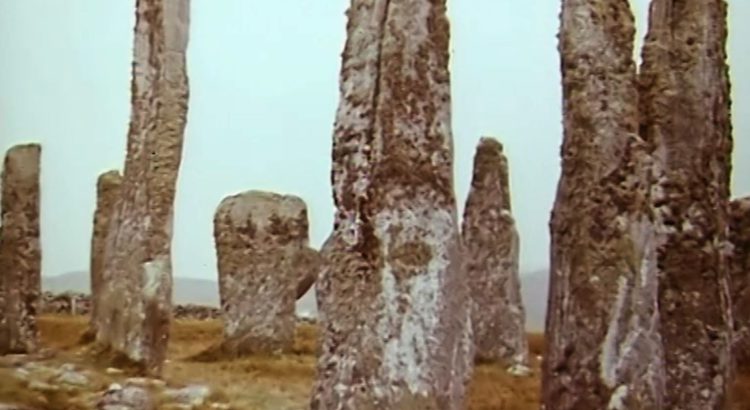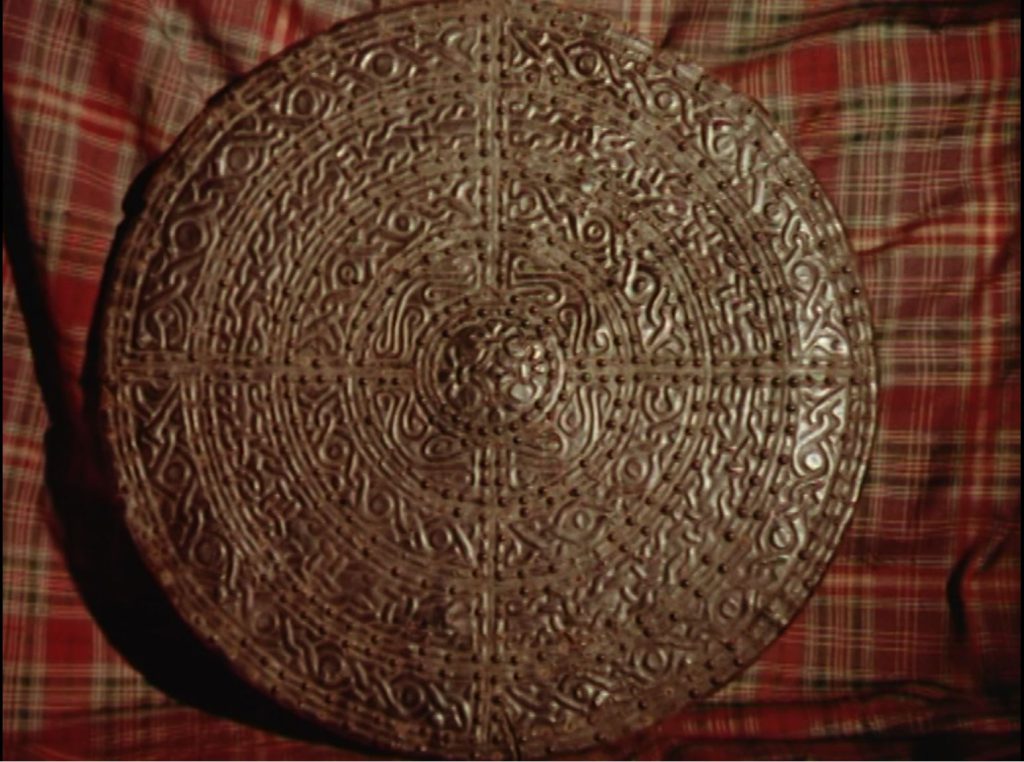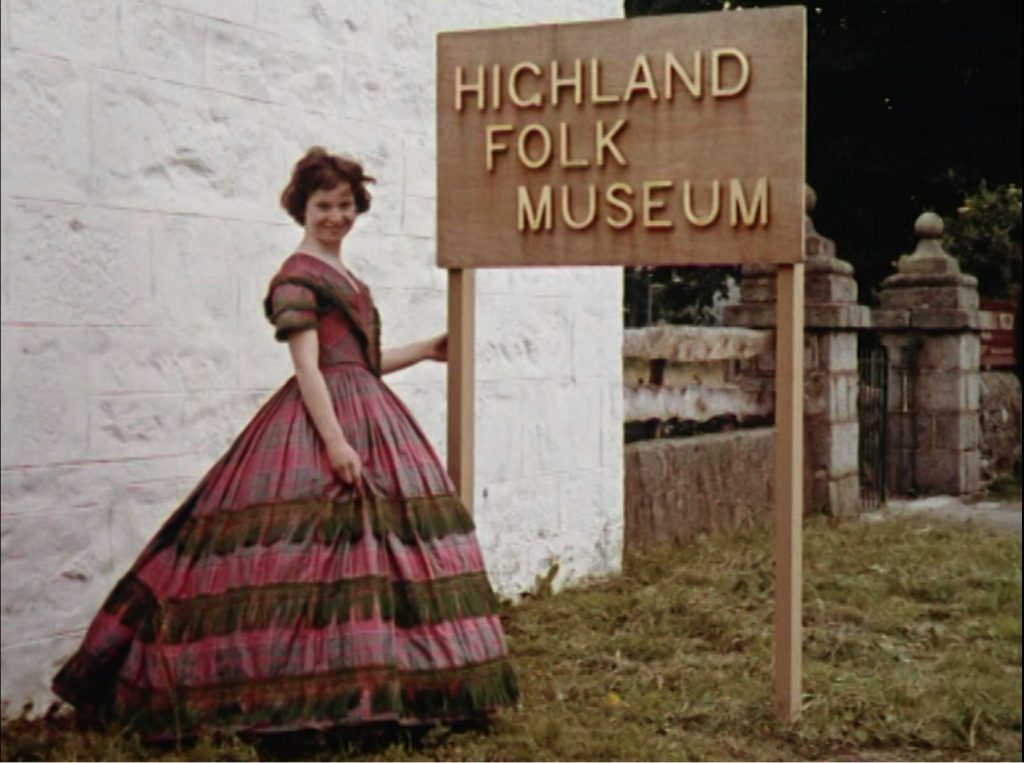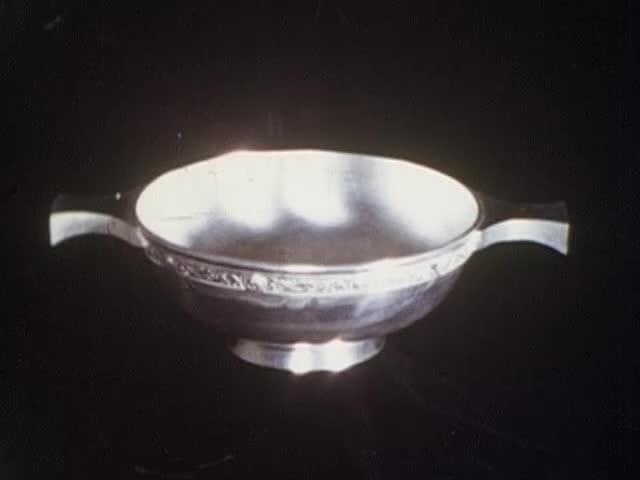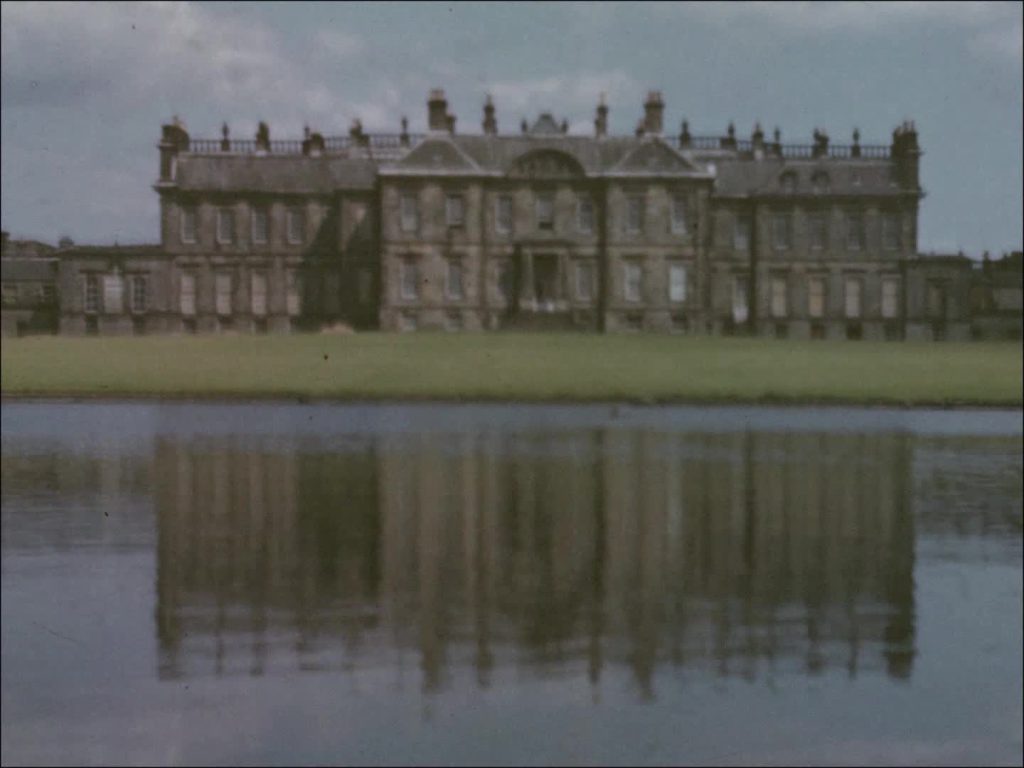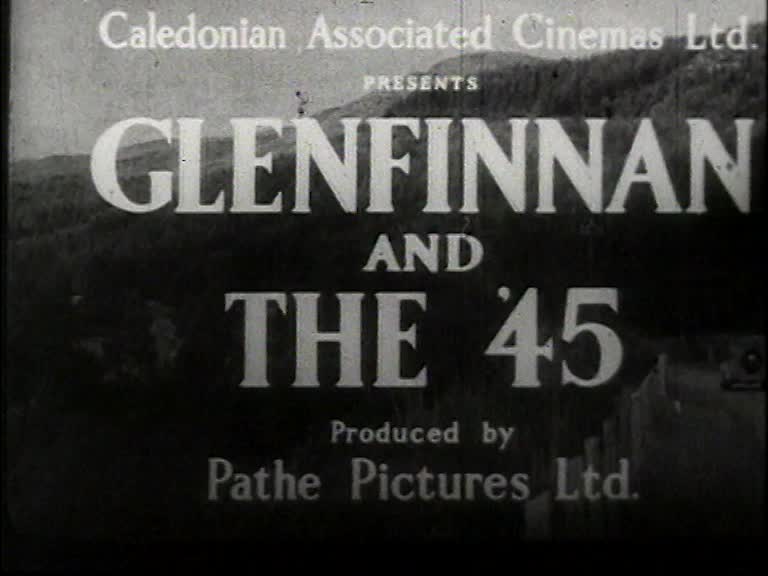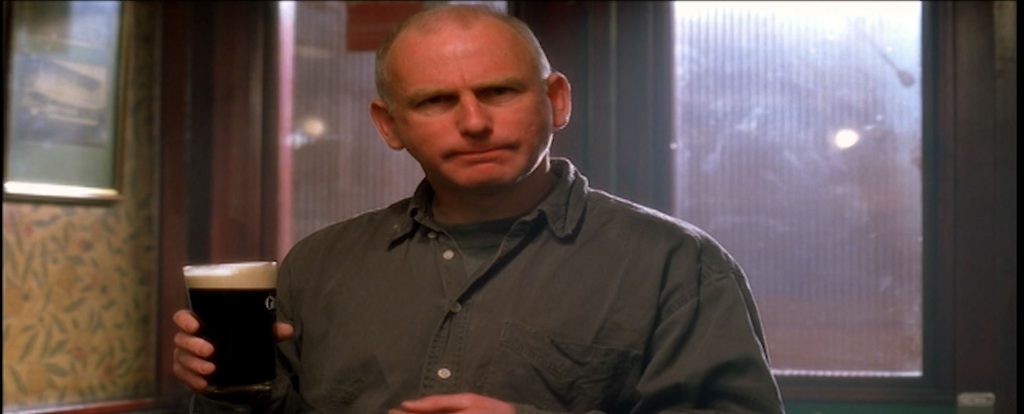This blog, inspired by the television series Outlander, will take you on a time travelling tour of Scotland on film! The National Library of Scotland has a world-class collection of moving images available to all. Whether a scholar or fan, explore the romance and reality of Scottish history recorded in both documentary and imaginative works. Expect to be surprised by films featuring places, people and traditions that compliment and challenge Outlander’s story and how these resonate in today’s Scotland.
But film was not even invented when most of the action of Outlander takes place. Today’s talented Scottish cast and crew have managed to bring Diana Gabaldon’s books to a whole new audience. This blog will also uncover some surprising links between the screen industry and Outlander that has captured the imagination of a global audience.
Scotland: Selling the Myth?
Scotland: Selling the Myth?
The collection is full of nostalgia for a Scotland faded in the mists of time, a romantic theme which runs through Outlander. Themes such as the doomed Jacobite rebellion, the legend of Bonnie Prince Charlie, and the beauty of the Scottish landscape echo on film. These works were designed to portray a Scotland full of adventure, where the past comes alive on a scenic canvas ready to be experienced today. Here are two examples from the 1950s, with links to view online.
But look a little closer. The first film was sponsored by Drambuie, a whisky liqueur company (legend holds the recipe was passed down from Charles Edward Stuart himself). The second was sponsored by David MacBrayne who run the ferries in the Western Isles. Both were produced by The Films of Scotland Committee, whose purpose was to promote Scotland both nationally and internationally, depicting all aspects of Scottish life. Such films were made to popularise Scotland to the world and encourage people to visit and spend money. And isn’t Outlander doing exactly that for the Scottish economy in 2023? Find out more about the Films of Scotland Committee
Action packed adventure
Action packed adventure
Outlander’s tales of epic battles, political intrigue and struggles for power capture the imagination. Films made as a family activity or hobby can be found in the archive and are great records of how stories were created on film. Aberdeen-based ‘Group 5’ do just that in this ambitious film showing the excitement of battle scenes and daring stunts at Culloden and its aftermath. Think of the investment of time in creating the costumes, script and music, probably all from scratch. Watch the film below and find out more about ‘Group 5’.
Another example in the collection is a video promising further adventure with Bonnie Prince Charlie! Set in Harris and involving the Harris Drama Group, this video re-imagines the Prince’s escapades in the Outer Hebrides and his escape with Flora MacDonald. It is full of humour and intrigue and shows a community responding to history and telling its own, local story around it.
This video is part of the Cinema Sgire community video project that ran from 1977 to 1981. One of the directors was Mike Russell, an early champion of Gaelic language screen production, who started the Celtic Film and Television Festival in South Uist in April 1980 and went on to become a well-known Scottish politician. Watch the film below and Find out more about Cinema Sgire
Folklore and crafts
Folklore and crafts
Outlander is full of crafts and customs that recall an older way of life. One of the locations used for filming was the Highland Folk Museum at Kingussie. This open-air museum has a Highland township from the 1700s, “Baile Gean”, that was used extensively in the series. On this mile-long site, visitors can discover how Highland people lived, worked and dressed, and how they managed their food. Watch the film below and find out more about the Highland Folk Museum
There are also films that record skilled craftspeople at work and traditional objects that dress the sets of Outlander. Thanks to the work of The Scottish Educational Film Association, for example, a record exists of the scouring, dyeing, winding, weaving and tailoring of the cloth to make a kilt. There is also a detailed look at how a silver Quaich is made. This Scottish drinking cup can be seen in Outlander’s oath taking scene, where Jamie swears allegiance to Colum, the Laird of the Clan MacKenzie. Watch the films below.
- Watch the film A Kilt is Ordered (1954)
- Watch the film The Quaich (1966)
Location, location, location
Location, location, location
One of the significant achievements of Outlander is to showcase the beauty and diversity of Scotland’s places. Some locations, such as the Highland Folk Museum mentioned earlier, are used as actual sets. Other locations simply inspire.
The standing stones at Craigh na Dun, for example, do not even exist at Kinloch Rannoch where filming took place. They are likely based on standing stones elsewhere, such as at Callanish on the Isle of Lewis.
Films in the collection show locations in Outlander as they look in the 20th and 21st centuries, from Culross to Hopetoun House. Too many to mention in this blog, they range from documentaries sweeping across centuries of Scottish architecture to television programmes showing a particular village. Watch some examples of these films below.
- Watch the film The Story of Culross (1938)
- Watch the film Raised From Stone (1975)
- Watch the film Beagan Gaidhlig – Gaelic Lesson (1971)
- Watch the film Impressions of Skye (1959)
Contemporary collecting
Contemporary collecting
The archive continues to collect work of relevance to today’s audiences (building on the story of Scotland that is told, in part, in Outlander) The film 1745 released in 2017, was inspired by advertisements that writer Morayo Akandé discovered for runaway slaves, placed in Scottish newspapers of the time. Stories must be not only retold but reinterpreted as new discoveries are made. Clive Russell, who played Lord Lovatt in Outlander, is a central character in this film.
There are also films that capture actual events and build the Library’s history of Scottish culture. This film has speeches and music marking the 200th anniversary of the raising of the standard of James VIII of Scotland and III of England by Bonnie Prince Charlie. It also offers an insight into the art of film production. James Nairn and his Caledonian Associated Cinemas, active in the Inverness area, worked with the well-known newsreel company Pathe to create this professional film. Watch the film below and find out more information about James Nairn
Characters and crossovers in the collection
Characters and crossovers in the collection
The Scottish film and television industry is one where people inevitably cross paths, and it’s fun to dig into the archive to find some of the Outlander actors in other, earlier films! See a few of these below.
- Watch the film Suilven Spring (1974) featuring Bill Paterson (Ned Gowan)
- Find out about the film Small Moments (2001) featuring Sam Heughan (Jamie Fraser)
- Watch the film The Fall of Shug McCracken (2002) featuring Gary Lewis (Colum MacKenzie)
- Watch the film Cuide Ri Cathy: Series 2 (2009) featuring Billy Boyd (Gerald Forbes)
‘Hidden’ films?
‘Hidden films?
With over one third of the catalogued films in the collection now available to view, there is plenty to explore online and by visiting the National Library of Scotland in Edinburgh and Glasgow. To finish, here are a couple of intriguing Outlander-related titles. The first is a prize-winning amateur film made by the Schools Museum Service in Glasgow at Kelvingrove Museum, demonstrating weaponry seen in Outlander. The second, written and narrated by Eric Linklater and based on his book of that name, follows the journey of Bonnie Prince Charlie after Culloden. This film survives only on a single 16mm print in the archive.
- Find out about the film Arms and Armour Part 1 (1955)
- Find out about the film The Prince in the Heather (1975)
End credit
End credit
This blog has tried to offer a taste of the kinds of films preserved in the National Library of Scotland, from documentary to feature film. For those interested in Scottish history, in both real, everyday lives as well as the magic, myth and legend of the country, you are sure to find something new. Film and video can definitely bring the past alive and surely is the next best thing to Outlander’s time travel!
